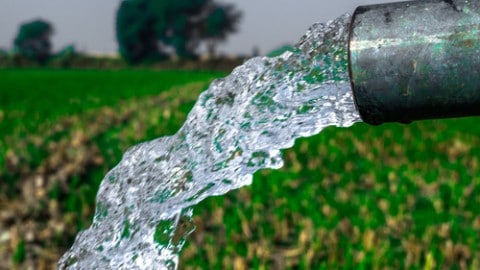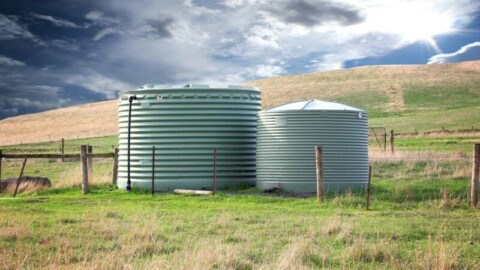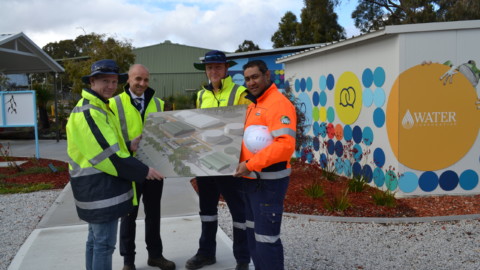Humans have shifted such a large mass of water that the Earth tilted nearly 80cm east between 1993 and 2010 according to a new study published in Geophysical Research Letters, AGU’s journal for short-format research.
The movement, caused by pumping water out of the ground and moving it elsewhere, has implications spanning the Earth and space sciences.
Based on climate models, scientists previously estimated humans pumped 2,150Gtons of groundwater – equivalent to more than 6mm of sea level rise – from 1993 to 2010. However, validating this estimate is difficult.

Researchers compare the observed polar motion (red arrow, “OBS”) to the modeling results, without (dashed blue arrow) and with (solid blue arrow) groundwater mass redistribution. The model with groundwater mass redistribution is a much better match for the observed polar motion, telling the researchers the magnitude and direction of groundwater’s influence on the Earth’s spin. Image: Seo et al. (2023), Geophysical Research Letters.
One approach lies with the Earth’s rotational pole, which is the point around which the planet rotates. It moves during a process called polar motion, which is when the position of the Earth’s rotational pole varies relative to the crust. The distribution of water on the planet affects how mass is distributed. Like adding a tiny bit of weight to a spinning top, the Earth spins a little differently as water is moved around.
Seoul National University geophysicist Ki-Weon Seo, who led the study, said, “Earth’s rotational pole actually changes a lot. Our study shows that among climate-related causes, the redistribution of groundwater actually has the largest impact on the drift of the rotational pole.”
Water’s ability to change the Earth’s rotation was discovered in 2016, and until now, the specific contribution of groundwater to these rotational changes was unexplored. In the new study, researchers modelled the observed changes in the drift of Earth’s rotational pole and the movement of water – first, with only ice sheets and glaciers considered, and then adding in different scenarios of groundwater redistribution.
The model only matched the observed polar drift once the researchers included 2,150Gtons of groundwater redistribution. Without it, the model was off by 78.5cm, or 4.3cm of drift per year.
Mr Seo said, “I’m very glad to find the unexplained cause of the rotation pole drift. On the other hand, as a resident of Earth and a father, I’m concerned and surprised to see that pumping groundwater is another source of sea-level rise.”
Jet Propulsion Laboratory research scientist Surendra Adhikari said, “This is a nice contribution and an important documentation for sure. They’ve quantified the role of groundwater pumping on polar motion, and it’s pretty significant.”
The location of the groundwater matters for how much it could change polar drift; redistributing water from the midlatitudes has a larger impact on the rotational pole. During the study period, the most water was redistributed in western North America and northwestern India, both at midlatitudes.
Countries’ attempts to slow groundwater depletion rates, especially in those sensitive regions, could theoretically alter the change in drift, but only if such conservation approaches are sustained for decades, Seo said.
The rotational pole normally changes by several metres within about a year, so changes due to groundwater pumping don’t run the risk of shifting seasons. But on geologic time scales, polar drift can have an impact on climate, Adhikari said.
The next step for this research could be looking to the past.
“Observing changes in Earth’s rotational pole is useful for understanding continent-scale water storage variations. Polar motion data are available from as early as the late 19th century. We can potentially use that data to understand continental water storage variations during the past 100 years. Were there any hydrological regime changes resulting from the warming climate? Polar motion could hold the answer,” Mr Seo said.




















